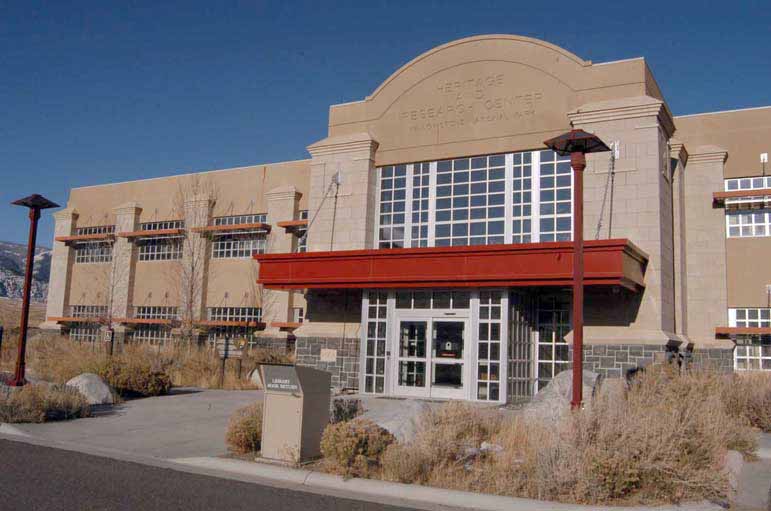
The Yellowstone Heritage and Research Center in Gardiner, Mont. hosts archives and other resources researchers use to learn about Yellowstone National Park science and history.
CODY, WYO. — Most visitors come to Yellowstone National Park to see the abundant wildlife, amazing thermal features or sweeping scenic vistas. But the park also has more than 300,000 cultural and natural artifacts, including skulls, scooters, skins and sketchbooks.
Yellowstone’s Heritage and Research Center in Gardiner, Mont. is a 32,000-square-foot facility that houses the park’s museum collection, archives, research library, herbarium and archaeology lab. It holds 3,000 linear feet of historic records, 90,000 images, 20,000 books and manuscripts, 35,000 archeological artifacts and 10,000 plant specimens.
Colleen E. Curry is the supervisory museum curator at Yellowstone, and works with her staff to keep track of more than 5.3 million items, the second-largest collection in the National Park Service.
“When I first came to Yellowstone, it was a big learning curve. I suddenly found myself dealing with a lot of stuffed dead things,” Curry joked last week during a lecture at the Buffalo Bill Center of the West in Cody, Wyo.
Curry discussed how she and her staff work to preserve, catalog and make available the park’s sprawling collection.
More than 200 researchers each year receive permits to work in the park, studying everything from unique bacteria in thermal features to rare plants and insects. The samples they gather remain the property of the park, and must be held in trust during research, housed at an approved facility or returned to the Heritage and Research Center.
Research specimens on file include more than 150 wolf skulls, several samples of rapidly evolving wild buckwheat and a wide range of thermophilic bacteria, which are held in outside labs at specialized research facilities.
Tracking and maintaining a growing line-up of bacteria is just one unique challenge in managing the park’s collection, Curry said.
Scientific research over the last few decades has typically lacked the kind of archival tradition followed by historians, for instance. And specialized gear often stores data in formats that are later abandoned, making it tough to access information for later use.
But perhaps the biggest challenge Curry faces is indexing and cross-referencing all the compelling data from such an overwhelming range of items. Old sketchbooks, field journals and diaries from early scouts and soldiers are full of helpful information like wildlife counts, she said. Archival photos show changes in vegetation, thermal features and waterways. Detailed and accurate weather records stretch back more than a century.
“We still have a long way to go to get all that information out there and make it searchable,” she said.
Curry said the Park Service is working with Clemson University to digitize portions of the collection, and the Yellowstone Association helps cover some of the costs for operating the Heritage and Research Center, which is open to the public and is used by historians, writers, researchers, artists and others.
The Yellowstone Heritage and Research Center at 200 Old Yellowstone Trail in Gardiner, Mont. is open weekdays from 8 a.m. - 5 p.m. Those interested in using the archives and collections should call 307-344-2662 for an appointment.
New and interesting discoveries continue to be made in places like the 11,000 thermal features scattered across Yellowstone, Curry said, and it’s impossible to know what kinds of items may end up being important additions to the collection many years down the road.
“We really don’t know what could be out there,” she said. “Who knows what could be discovered?”
Contact Ruffin Prevost at 307-213-9818 or ruffin@yellowstonegate.com.
